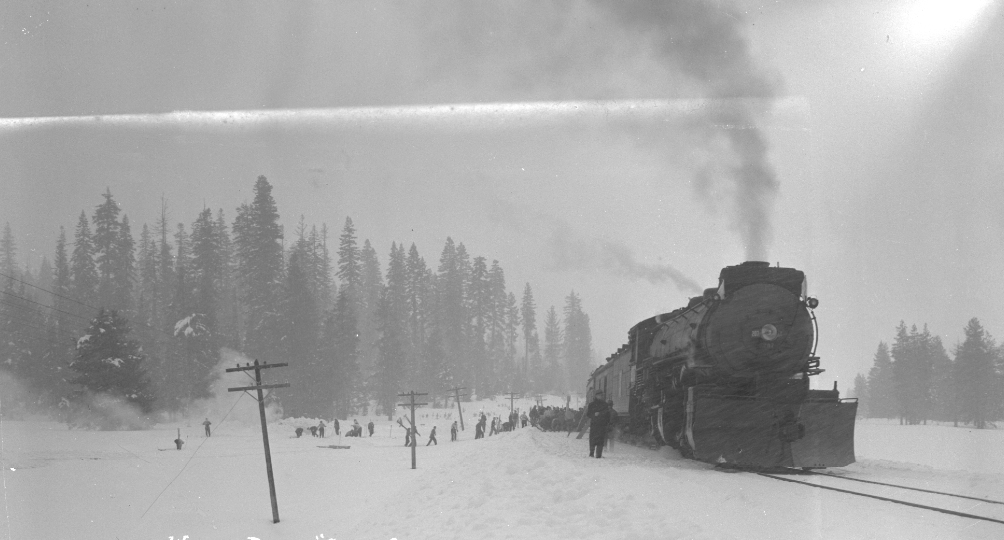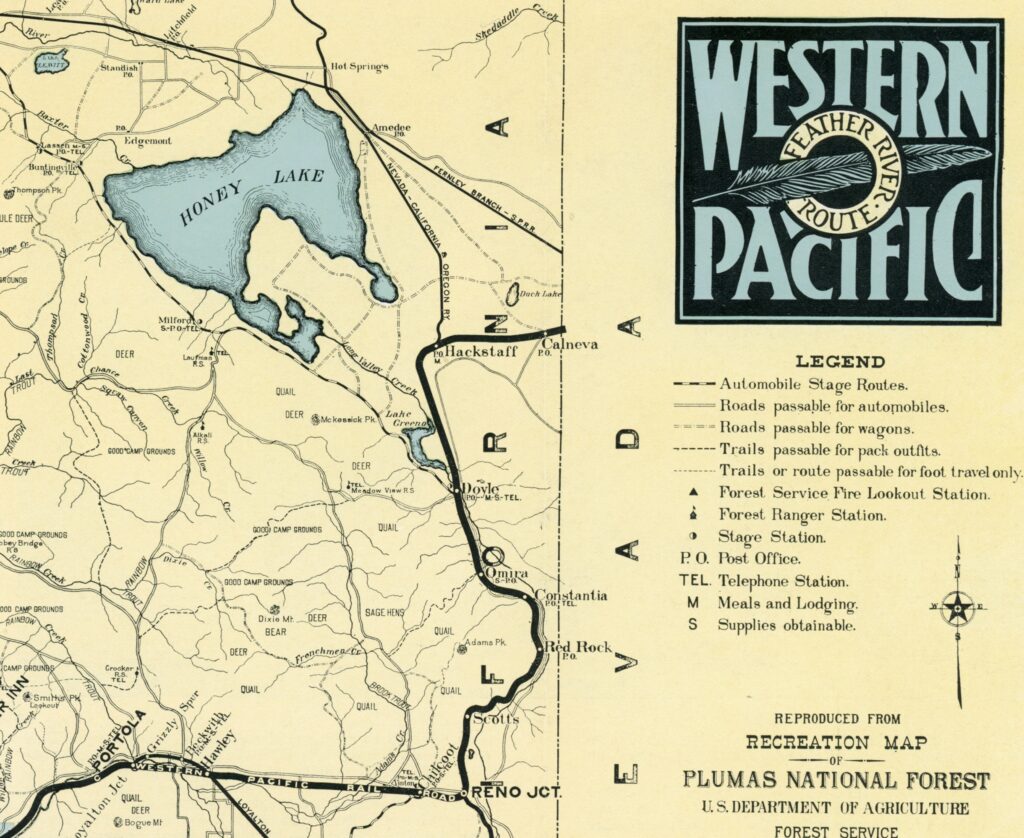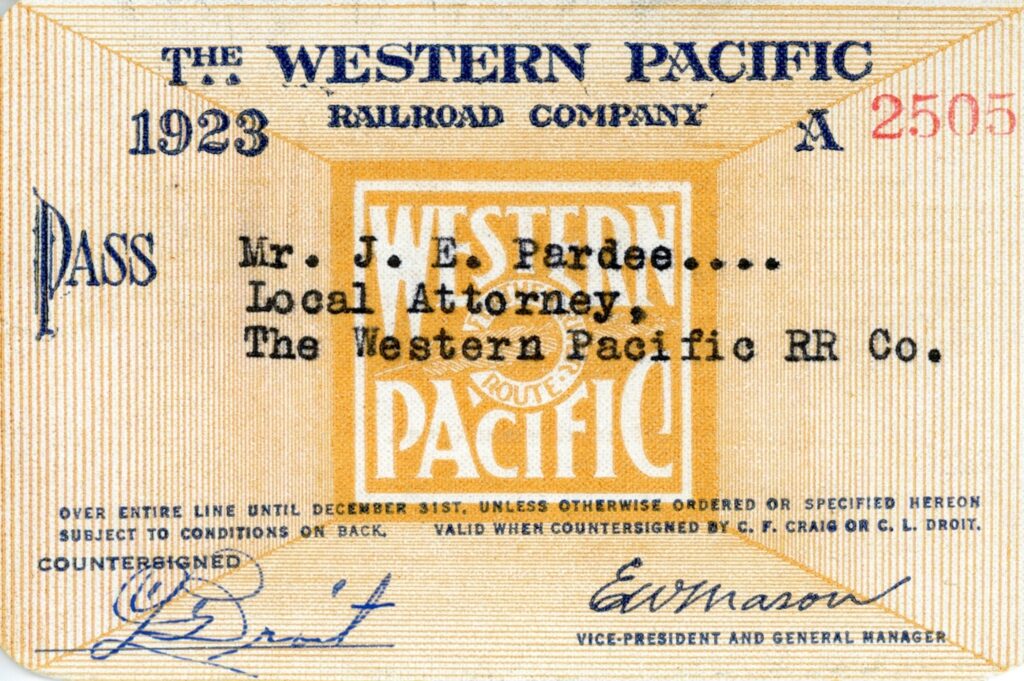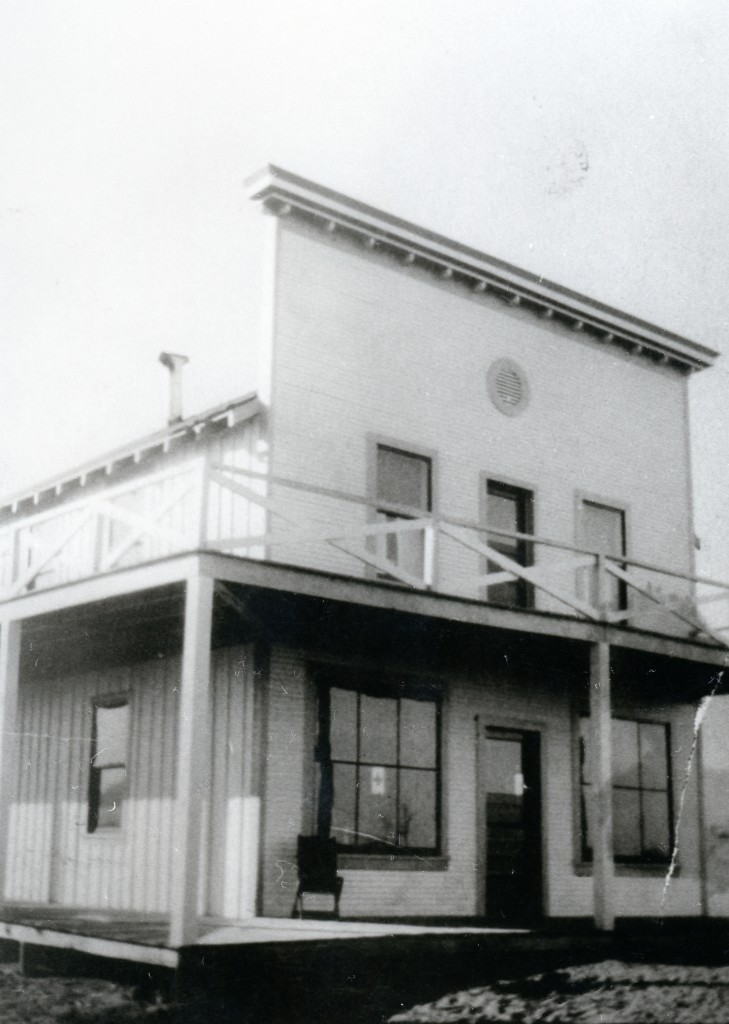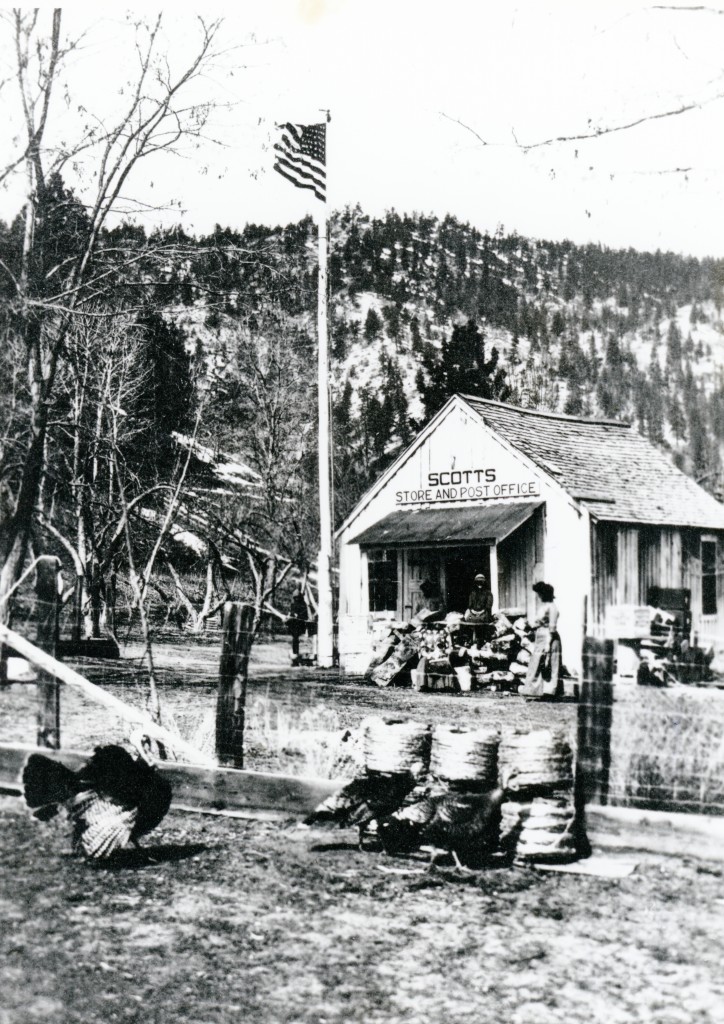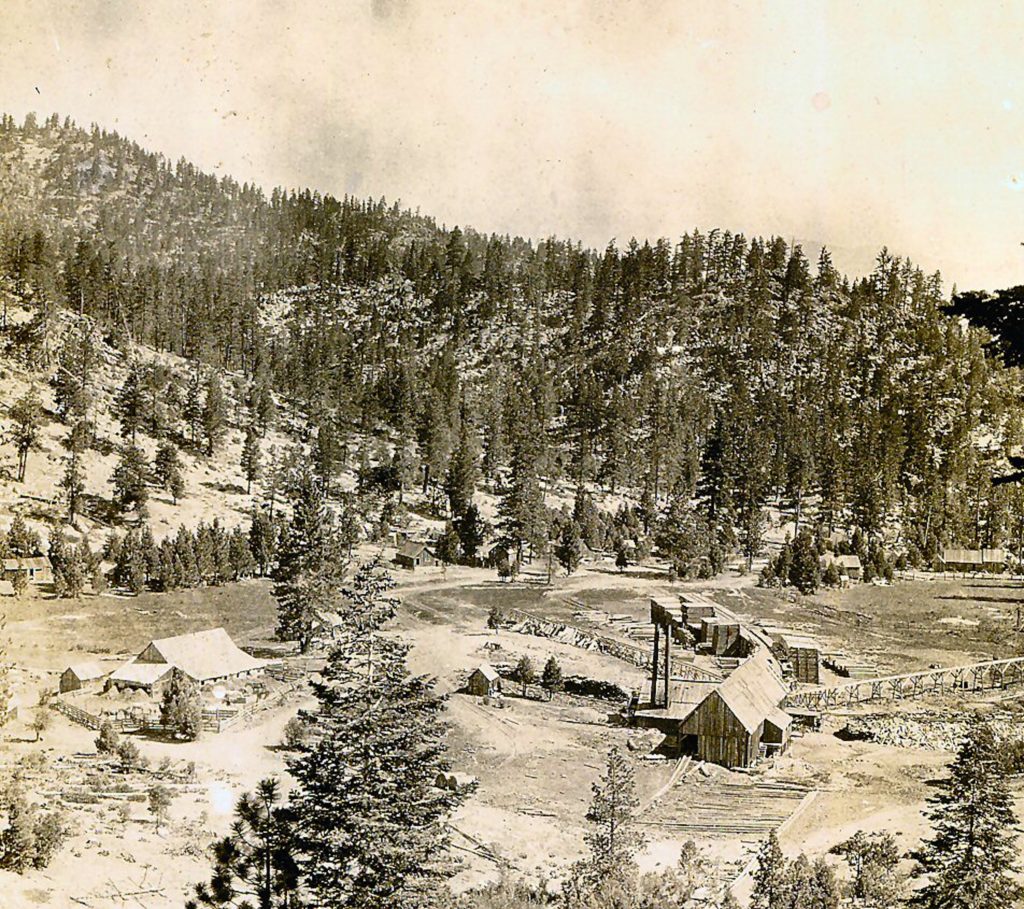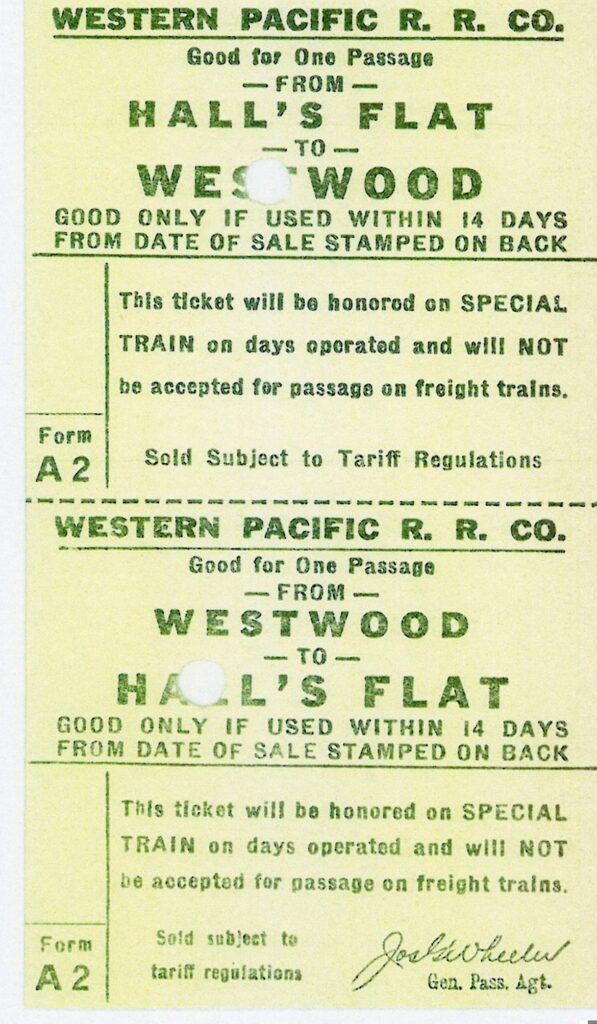
In 1942, Red River Lumber Company’s tributary timber was nearly exhausted. The company was forced to go north some thirty miles to the Poison Lake country. At Hall’s Flat they established Camp Bunyan and the Harvey Railroad Logging line.
One of many obstacles Red River encountered with this expansion, how to get the loggers to work. The highway system, especially for this region was non-existent. There was Western Pacific Railroad’s Northern California Extension that went from Keddie, through Westwood and north to Bieber. It also dissected Halls Flat. In the past, Red River was able to haul logs to its mill on its own private railroad logging network. The same was true in providing transportation for loggers to the camps.
This was a game changer. Red River had to negotiate with Western Pacific on two fronts. First Red River had to contract with Western Pacific to haul logs from Halls Flat to the Westwood mill. It should be noted that Fruit Growers had to do the same with Southern Pacific to haul their logs from Westwood Junction to its Susanville mill.
Transporting the loggers to and from, resulted in a special commuter train dubbed the Paul Bunyan Express. This special train was not available to the public, nor does it appear on its timetables. It does explain why Halls Flat had a railroad depot, unusual for a remote location, especially in the 1940s.
In 1949, the Paul Bunyan Express ceased to exist when the Harvey Railroad logging line shut down.
To Support, Please Donate or Subscribe

